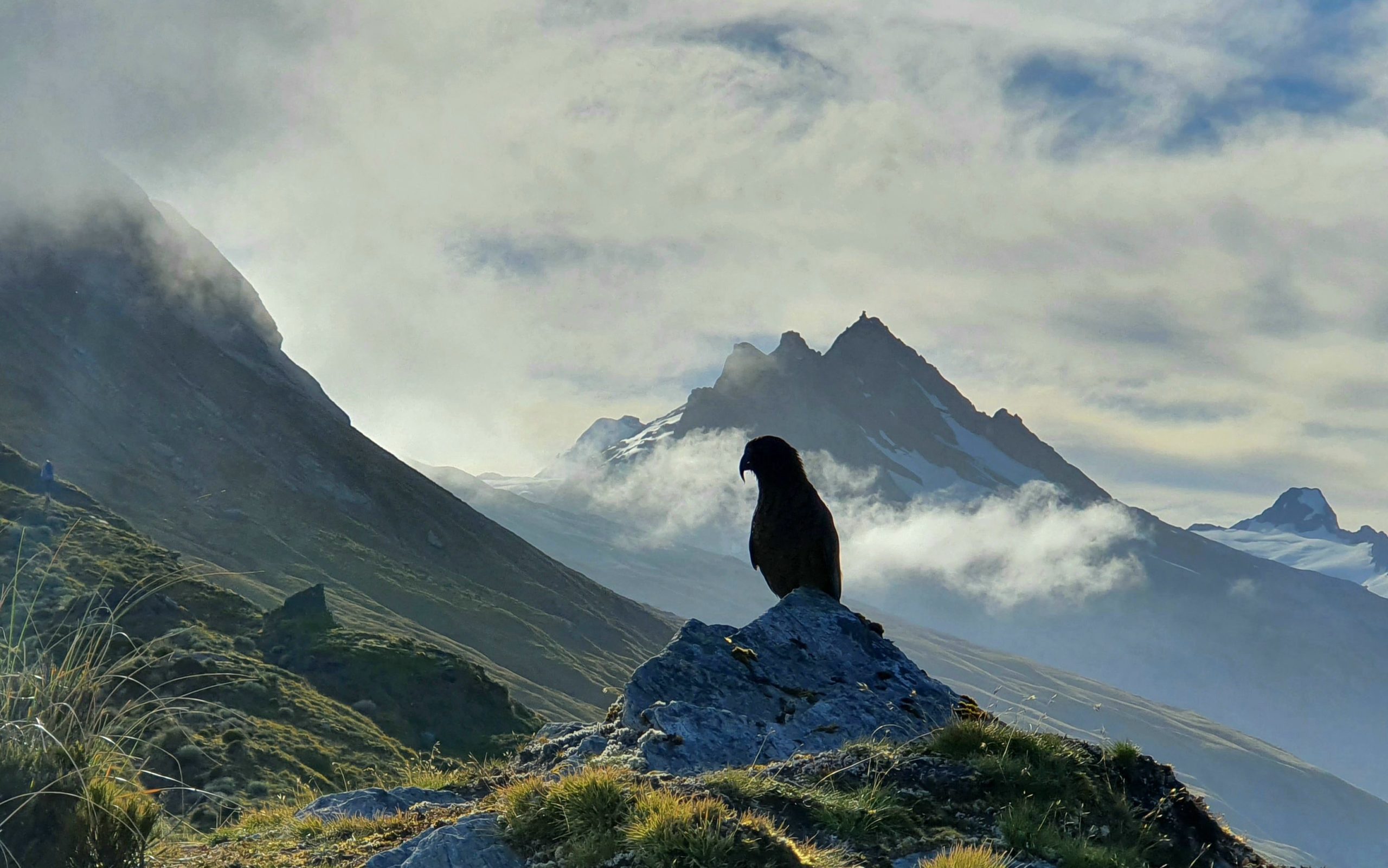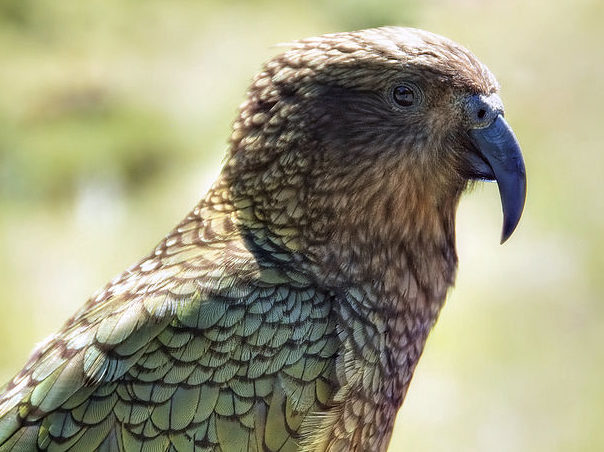New research published in the New Zealand Journal of Zoology shows that mast years are bad news for kea. Native beech trees produce millions of tasty seeds in a mast year, which rodents love. The rodent populations explode, setting in motion a devastating cascade of events. But it’s when the masting stops that taonga species like kea are really at risk.

Department of Conservation (DOC) scientists, Josh Kemp and Laura Young (who also works for the Kea Conservation Trust), led the research with help from their field teams. They drew on 30 years of data from three key sites in the South Island (Te Waipounamu) and hope their research will help save the cheeky parrots from further declines.
The mystery of the Nelson Lakes kea

Josh says it all started with the mysterious disappearance of kea from Nelson Lakes National Park. DOC started radio-tagging and monitoring kea in the park in 1990.
“In the 90s, things were going well for kea. The nests were making it through nearly half the time, and the juveniles we radio-tagged were surviving the early years really well,” Josh says.
But when researchers returned more than a decade later, they found that kea had declined by 70% in 12 years. They knew there’d been a big mast event at the turn of the millennium (1999-2000), with beech trees and other natives like rimu all seeding at once, creating a bumper feast for rodents.
It was devastating for native birds. “Mōhua disappeared from Mount Stokes, and kākāriki karaka disappeared from the north branch of the Hurunui in the Waimakariri – it was a disastrous time,” Josh says.
Mastering the problem

“Kea don’t suffer much from rats, but the rats and mice bring a plague of stoats,” Josh says. Rodents are a key prey species for stoats so, when their numbers increase, stoats are hot on their tails.
The problems start when the mast runs out and rodent numbers drop back down. Without rats and mice to hunt, the hungry stoats switch to other prey. This ‘prey-switching’ is bad news for birds that nest on the ground or in the holes of trees. Josh says stoats get bolder during the “post-mast years of desperation,” and will take on bigger birds like kea and even takahē.
“Now we’re also seeing feral cats coming into the forests more and more. So it’s that combination of a stoat irruption, a feral cat incursion, and then the crash in mouse abundance that just combines to create a perfect storm for kea,” Josh says.
Kea-ful research
The research focused on three key areas – South Westland, Kahurangi National Park, and the Eastern forests. While the east has smaller forests made up of drier beech trees, the west is wetter and covers larger areas with mixed forests.
Because they’d started monitoring in the 90s, they had 30 years of data from the three study areas to draw on. They had information about nesting success, the lives (and deaths) of individual birds, predator populations, as well as their own field observations.
Using radio-tagging, the team could locate and recover dead kea quickly and look for clues in the field as to how they died.
So what did they find?

Kea populations in the east definitely have it harder than their relatives over the Main Divide. Over the study period, far more kea were killed by stoats and feral cats in the drier eastern forests than in the west, with introduced predators responsible for 85% of kea deaths.
They also concluded that post-mast years are devastating for kea. Following the 2019 mast, only 66% of the birds survived through 2020, with the same low survival rates again in 2021. This means two-thirds of adult kea died in this two-year period.
But the research also shows that predator control really works. In areas with 1080 operations, kea had a 90% survival rate during the mast and post-mast period. This is the survival rate that’s needed for the species to thrive.
Because kea suffer greatly in post-mast years, the researchers recommend targeting introduced predators in the months just before the rodent population crashes. They also suggest focusing on the east, where kea are more vulnerable, extending predator monitoring programmes and funding research into feral cats in the eastern forests.
Weka, takahē, whio, kiwi and even wētā, will also benefit from this research. Now they know why kea are so rare in the east, DOC is focusing on turning the tide for kea in this part of the country.
Kea to help?
If you live somewhere with kea nearby, join a trapping group or help with conservation in the area. You can also volunteer or donate to the Kea Conservation Trust.
If you’re heading into the field to run a trap-line or go on a tramp, complete a kea survey while you’re out. Josh says, “The absences are just as important as the presences – you only have to be in the bush for one hour and you can log a one-hour survey.”
With the right help, kea can fly at full mast again.

